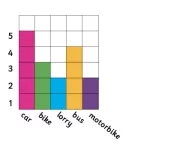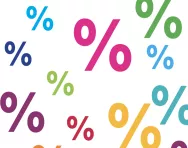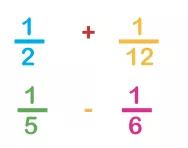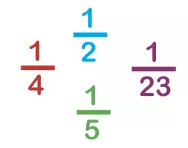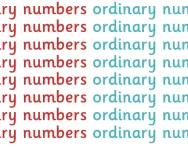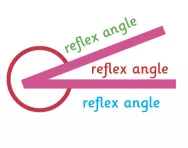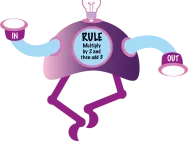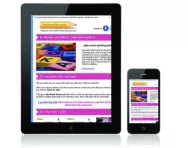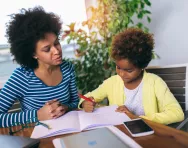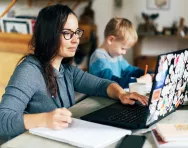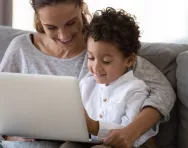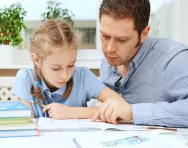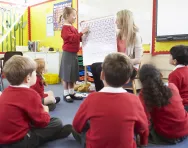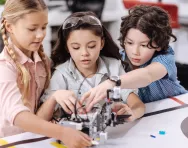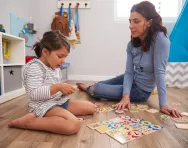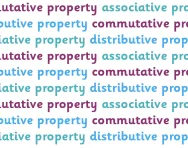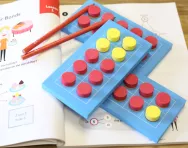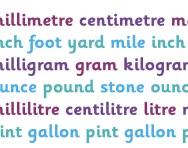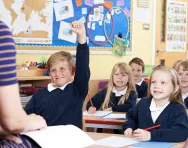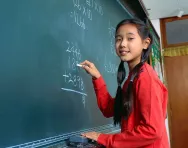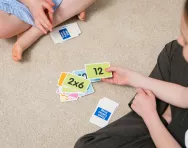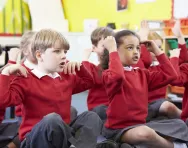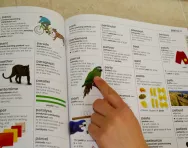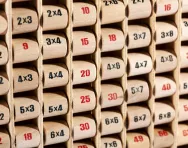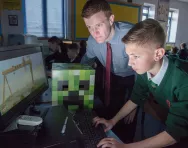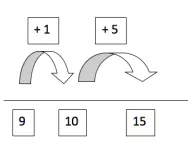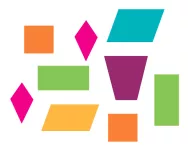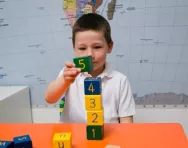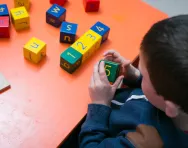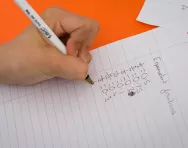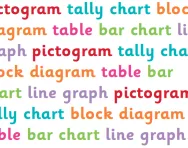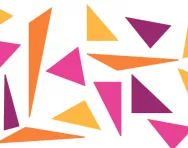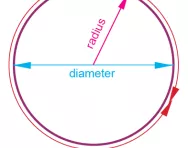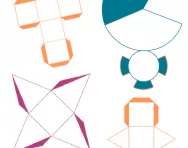Types of graphs
Graphs are a great tool for visualising and understanding data and they're also a key part of the National Curriculum. This article explains the different types of graph your child will learn about in their primary-school maths lessons and some ways you can help them at home.
Finding one number as a percentage of another
As children progress through Years 5 and 6 of primary school, they will have to tackle more and more questions that are about percentages. You can guarantee that there will be at least a few questions on the Y6 SATS around percentages. It is important that children understand how to solve these with confidence. Here, we tackle the tricky question of how to find one number as a percentage of another.
A teacher's guide to adding fractions
Adding and subtracting fractions can be a tricky skill to teach. Children often lack confidence in solving equations with fractions, but with the right strategies, we can help children develop a solid understanding and boost their confidence. We asked experienced teacher, Matthew Revill, to share some valuable tips and tricks to help support children in mastering the skill of adding and subtracting fractions.
24 fun toys for summer outdoor learning
It's well established that outdoor play is important for young learners and provides opportunities to develop physical, social, fine and gross motor skills. Our editor, Kate Morgan, has put together her top picks of outdoor toys. So get the kids outside, having fun and learning this summer. Let the games begin!
What are fractions?
Fractions are a fundamental concept in primary maths, and they're all about sharing and dividing. Whether it's dividing a pizza into equal slices or sharing a bag of sweets between friends, fractions are a part of everyday life.
What are ordinary numbers?
Ordinary numbers, also known as counting numbers or natural numbers, are the foundation of mathematics. They're the numbers we use every day to count objects, tell the time, measure distances and much more.
What is a reflex angle?
An important geometry concept taught in Key Stage 2 is how to identify different types of angles, including reflex angles. Understanding angles is not just about being able to identify them; it's about recognising their real-world applications, from the hands on a clock to the turning of a wheel.
What is a function machine?
Function machines are versatile tools in the teaching of mathematics, helping children understand and explore a wide range of mathematical concepts in a fun and engaging way. From basic operations in Key Stage 1 to more complex functions in Upper Key Stage 2, function machines can help play a crucial role in developing children's mathematical understanding and skills.
How the daily learning programme works
Whether you're taking your child out of school for a period, setting out on your home education journey or simply looking for extra activities to boost your child's learning, here's why the daily learning programme could be the right fit for you...
Best numeracy home education resources
Boost your child's confidence with all aspects of maths with our pick of the best home education numeracy resources: games, hands-on activities, video explanations, online lessons and downloadable workbooks, all available to access for free.
Best kids' activity packs to download
Top up the resource bank and keep the kids busy at home with reading, puzzles, crafting, science and other screen-free activities. They're all available to download for free and you won't need any special equipment, so head off the "I'm bored!" moans and buy yourself a few moments of peace so you can get some of your own work done!
Best YouTube channels for home education
Whether you want your child to learn about maths, geography, science or history, they'll be happy to watch a video about it – and these YouTube channels introduce topics through songs, animations, experiments, skits and riddles. From phonics for new readers to physics for keen scientists, these are the educational channels to subscribe to.
Year 5 maths and English: how to support your child at home
Teacher and parent Phoebe Duffy highlights seven key maths and English skills to focus on with your Year 5 child, helping them have a successful year at school.
20 of the best live streams for kids
Help your primary-age child stay educated and entertained with our round-up of the best live streams for kids.
Best beginners’ algebra apps for kids
Help your child get to grips with the algebra concepts taught in primary school with apps that help to demystify mathematical equations.
Best decimals apps for kids
Help your child learn about decimals and how to use them and calculate with them with these brilliant learning apps.
Best activity books for children
Whether you're on the move or at home, a great activity book offers hours of screen-free learning and fun. Crosswords, maths challenges, mystery solving and code writing are all covered in our best activity books for kids picks. We can't guarantee you won't want to help out with the puzzling, though!
How maths teaching has changed since we were at school
Bus stops, the grid method, number bonds… Maths in today’s classroom can seem undecipherable. We look at how things have changed since we were kids.
How to future-proof your child's learning
Is your primary-school child getting the education they'll need to thrive in the 21st century? Jill Hodges, CEO and Founder of Fire Tech technology classes and camps for kids, describes the five skills young people will need, at work and in life, to make the most of our technological society's opportunities.
Best maths board games for children
Looking for an engaging way to practise maths concepts and skills? Try a mathematical board game! Whether your child is learning about times tables or place value, addition or square roots, there's a family-friendly board game to try. Get ready to roll the dice...
What are the commutative, associative and distributive property?
The commutative, associative and distributive properties or laws underpin algebra and are first introduced to children, in very broad terms, in the primary-school years. We explain how your child will start to understand the basics of higher maths in our guide for parents.
What is the concrete pictorial abstract approach in maths?
Concrete > pictorial > abstract (CPA) is a key feature of the Singapore maths mastery method now being taught in many primary schools. Mastery expert Kate Moore from Maths – No Problem! explains what's involved.
What are imperial units?
How children learn about imperial units of measurement in primary school, plus metric to imperial conversion tables.
5 reasons kids hate maths – and what you can do about it
Does your child dread their maths lessons and end up in tears over homework? We take a look at what’s going wrong, and how you can help.
What is the Asian 'maths mastery' approach?
Many UK primary schools have adopted a way of teaching maths that’s popular in South Asia. We explain what the Asian "maths mastery" method is all about.
Best maths books for kids
Crack codes, learn maths tricks, unlock the secrets of nature (hint: they're mathematical!), marvel at number facts and learn to build a spaceship – just a few of the maths-master skills imparted by these books, our pick of the best maths titles for kids.
Best learning songs
Could songs and music help your child learn and remember English, maths and science facts? We pick our favourite learning songs, covering everything from adverbs and angles to onomatopoeia and photosynthesis.
Best reference books for children
Reference books and dictionaries offer us information that's accurate, well researched and beautifully presented and are invaluable when you're working on a homework project. From atlases to dictionaries and encyclopedias, we recommend some of the best English, maths, science, history and geography reference books for primary-school children.
Best times tables learning tools
"Times tables practice"... words guaranteed to make any primary-school parent's heart sink. Make multiplication tables learning a little less painful and a little more effective with our pick of the best games, apps, songs and tools on the market.
Learning through Minecraft
You may think it’s just another video game – albeit a particularly addictive one – but Minecraft could have educational benefits too…
What is bridging through 10?
You probably "bridge through 10" without even realising it when you're adding up numbers in your head. We explain how this method will be presented to your child in the classroom and how you can help them practise at home.
What is a quadrilateral?
Can you name the 2D shapes we classify as quadrilaterals? Find out how your child will learn about four-sided, 2D shapes in primary school and try some hands-on activities to reinforce their learning at home.
Hands-on maths: how it could help your child
Counting on fingers is an important maths tool in the early years of primary school, but is it something your child should outgrow? We look at the pros and cons of hands-on maths strategies.
Five fun maths activities to try at home
From board games to baking, we’ve rounded up the best ways to get your child practising their maths skills without even realising.
Best maths story books for children
Introduce ratio, pie charts, probability and even simplifying fractions to children with these brilliant maths story books, picture-book presentations of mathematical concepts that primary-school children will love.
Teachers' tricks for KS2 maths
Is your child struggling with KS2 maths? Help them learn effectively and boost their number confidence in Year 3, 4, 5 and 6 with some useful calculation strategies and tips from primary teacher Phoebe Doyle.
What is data handling?
From pictograms to line graphs, children learn a lot about collecting, organising and presenting data in primary school maths. We explain how data handling is taught in KS1 and KS2 and how you can help your child get to grips with basic statistics at home.
What are equilateral, scalene, isosceles and right-angled triangles?
Children learn to classify triangles as equilateral, isosceles, scalene or right-angled in KS2 geometry. Our guide for parents explains everything you need to know about triangles in primary school, from working out the area to calculating the internal angles.
What are the parts of a circle?
By the end of KS2 children are expected to be able to identify the parts of a circle (circumference, radius and diameter) and begin to use formulae to calculate a circle's perimeter and area. We explain what parents need to know about this aspect of primary-school geometry.
What are nets of shapes?
Can you make a 3D shape from its net? We explain how nets are used in the primary classroom to help children learn more about three-dimensional shapes and their properties in a hands-on, constructive way.
